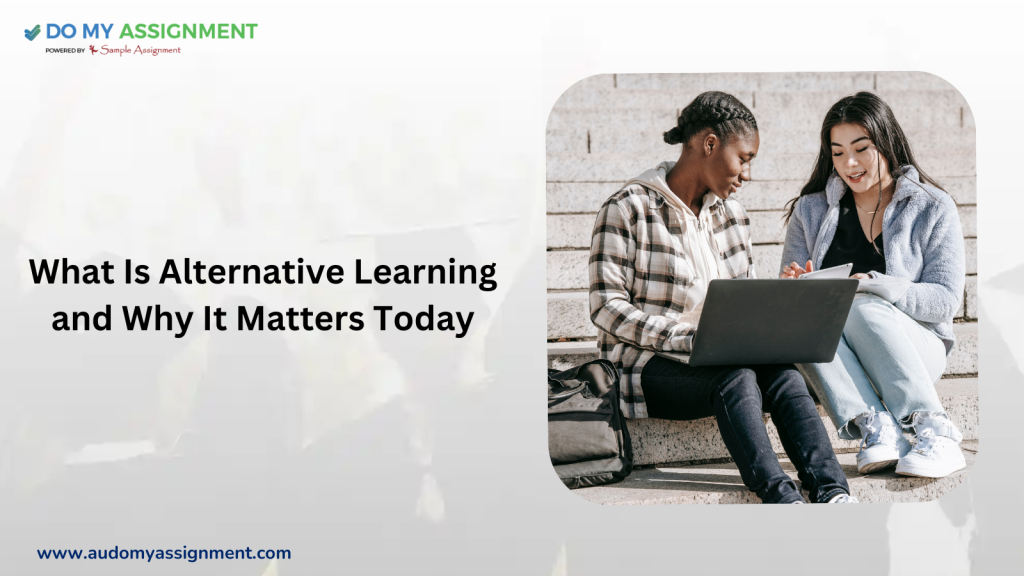
Education is no longer confined to traditional classrooms and rigid curriculums. As the world evolves, so does the need for flexible and innovative learning methods. Enter alternative learning, a dynamic approach to education that challenges conventional norms and caters to diverse learning needs.
In this blog, we’ll explore what alternative learning is, why it’s gaining momentum, and how it benefits students and educators alike.
Understanding Alternative Learning
Alternative learning refers to non-traditional educational methods designed to meet unique learning styles, interests, and life circumstances. Unlike mainstream education, it emphasizes personalization, creativity, and experiential learning.
Key Characteristics of Alternative Learning:
- Flexibility: Students learn at their own pace.
- Custom Curriculum: Tailored to individual interests and goals.
- Experiential Approach: Focuses on hands-on activities and real-world applications.
- Inclusivity: Welcomes learners from diverse backgrounds and abilities.
Examples of alternative learning models include homeschooling, online courses, Montessori schools, and experiential learning programs.
Why Alternative Learning Matters Today
In a rapidly changing world, alternative learning has become increasingly relevant. Here’s why:
1. Personalized Learning Experiences
Every student learns differently, and traditional classrooms often fail to address individual needs. Alternative learning empowers students by adapting to their strengths and challenges.
2. Encourages Critical Thinking and Creativity
Alternative education fosters innovation by encouraging learners to think outside the box. This approach nurtures creativity and problem-solving skills essential in today’s job market.
3. Accessibility for All
For students unable to attend regular schools due to disabilities, geographical limitations, or personal circumstances, alternative learning offers an inclusive platform. Online options, for instance, allow students to access quality education from anywhere.
4. Prepares Students for the Future
With its emphasis on practical skills and adaptability, alternative learning prepares students for real-world challenges. It encourages lifelong learning, an invaluable trait in a fast-paced, tech-driven society.
Popular Alternative Learning Methods
1. Online Learning
The rise of technology has made online learning a popular alternative. It allows students to learn anytime, anywhere, and at their own pace.
- Interactive platforms like Coursera and Udemy offer diverse courses.
- Personalized support from services like Do My Assignment ensures students can meet their academic goals effectively.
2. Homeschooling
Parents can design customized curriculums that align with their child’s interests and abilities. Homeschooling also promotes family bonding and a supportive learning environment.
3. Experiential Learning
This hands-on approach emphasizes learning through experience. Internships, community projects, and field trips fall under this category, providing practical knowledge and skills.
4. Montessori Education
Montessori schools focus on self-directed learning, where students explore topics of interest under teacher guidance. This method encourages independence and curiosity.
5. Hybrid Models
A blend of traditional and alternative methods, hybrid learning offers the best of both worlds. It combines in-person instruction with online resources, creating a balanced learning environment.
Challenges of Alternative Learning
Despite its advantages, alternative learning has its share of challenges:
- Lack of Standardization: Curriculums can vary widely, affecting consistency.
- Limited Social Interaction: Online and homeschooling methods may limit peer engagement.
- Accessibility Issues: Not all students have access to technology or resources.
- Perception: Some still view alternative education as less credible than traditional systems.
The Role of Technology in Alternative Learning
Technology plays a pivotal role in shaping alternative education. From virtual classrooms to AI-driven tutoring platforms, advancements have made learning more engaging and efficient.
- Interactive Tools: Gamified apps and VR experiences make learning fun.
- 24/7 Support: Platforms like Do My Assignment provide around-the-clock assistance for academic queries.
- Global Access: Technology bridges geographical gaps, enabling global collaboration and resource sharing.
Who Can Benefit from Alternative Learning?
Alternative learning isn’t just for students who struggle in traditional settings. It’s a valuable option for:
- Gifted Students: Seeking advanced or specialized courses.
- Adult Learners: Returning to education after a break.
- Professionals: Upskilling through online certifications.
- Parents and Families: Preferring homeschooling for personalized education.
How to Succeed in Alternative Learning
To thrive in alternative learning, consider these tips:
- Set Clear Goals: Know what you want to achieve and plan accordingly.
- Stay Organized: Use calendars and apps to manage your schedule.
- Engage Actively: Participate in discussions, projects, and hands-on activities.
- Seek Support: Don’t hesitate to ask for help. Services like Assignment help can assist with coursework and assignments.
- Embrace Flexibility: Be open to new methods and adapt as needed.
Conclusion: Why Alternative Learning Deserves Attention
Alternative learning is transforming education by prioritizing individuality, inclusivity, and adaptability. It offers students the freedom to learn in ways that resonate with their unique needs and aspirations.
Whether you’re a student exploring new learning avenues or a parent considering options for your child, alternative education presents endless possibilities. And if the journey feels overwhelming, remember that support systems like Do My Assignment are just a click away.
Invest in alternative learning today to unlock a future full of potential and opportunities.